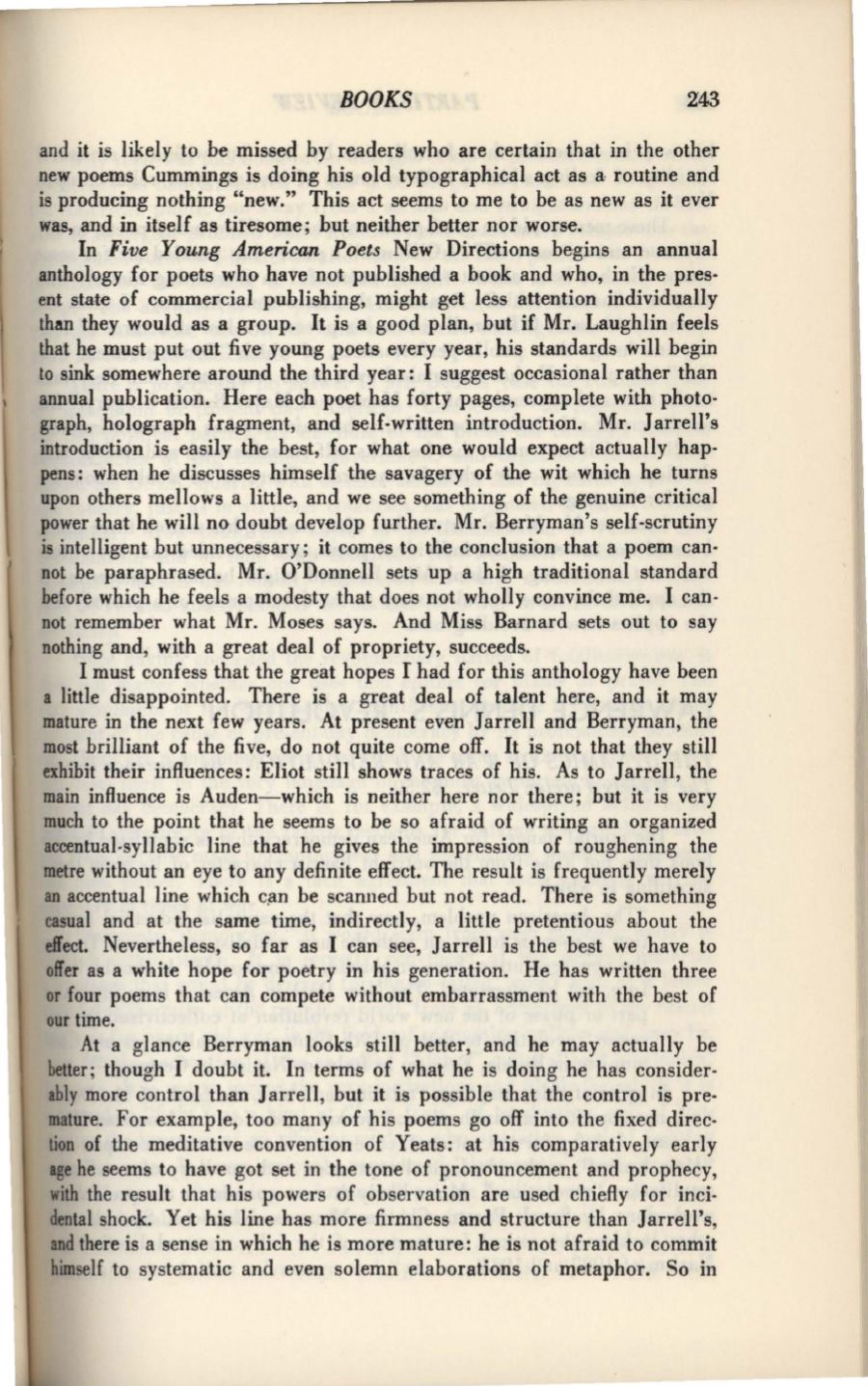
BOOKS
243
and
it
is likely to be missed by readers who are certain that in the other
new poems Cummings is doing his old typographical act as a routine and
is producing nothing "new." This act seems to me to be as new as it ever
was, and in itself as tiresome; but neither better nor worse.
In
Five Young American Poets
New Directions begins an annual
anthology for poets who have not published a book and who, in the pres–
ent state of commercial publishing, might get less attention individually
than they would as a group.
It
is a good plan, but
if
Mr. Laughlin feels
that he must put out five young poets every year, his standards will begin
to sink somewhere around the third year: I suggest occasional rather than
annual publication. Here each poet has forty pages, complete with photo·
graph, holograph fragment, and self-written introduction. Mr. Jarrell's
introduction is easily the best, for what one would expect actually hap·
pens: when he discusses himself the savagery of the wit which he turns
upon others mellows a little, and we see something of the genuine critical
power that he will no doubt develop further. Mr. Berryman's self-scrutiny
is intelligent but unnecessary; it comes to the conclusion that a poem can·
not be paraphrased. Mr. O'Donnell sets up a high traditional standard
before which he feels a modesty that does not wholly convince me. I can·
not remember what Mr. Moses says. And Miss Barnard sets out to say
nothing and, with a great deal of propriety, succeeds.
I must confess that the great hopes
f
had for this anthology have been
a little disappointed. There is a great deal of talent here, and it may
mature in the next few years. At present even Jarrell and Berryman, the
most brilliant of the five, do not quite come off. It is not that they still
exhibit their influences: Eliot still shows traces of his. As to Jarrell, the
main influence is Auden-which is neither here nor there; but it is very
much to the point that he seems to be so afraid of writing an organized
accentual-syllabic line that he gives the impression of roughening the
metre without an eye to any definite effect. The result is frequently merely
an accentual line which c.an be scanned but not read. There is something
casual and at the same time, indirectly, a little pretentious about the
elrect.
Nevertheless, so far as I can see, Jarrell is the best we have to
offer as a white hope for poetry in his generation. He has written three
or four poems that can compete without embarra·ssment with the best of
our time.
At a glance Berryman looks still better, and he may actually be
better; though I doubt it. In terms of what he is doing he has consider·
ably more control than Jarrell, but it is possible that the control is pre·
mature. For example, too many of his poems go off into the fixed direc·
tion of the meditative convention of Yeats: at his comparatively early
age he seems to have got set in the tone of pronouncement and prophecy,
with the result that his powers of observation are used chiefly for inci–
dental shock. Yet his line has more firmness and structure than Jarrell's,
and there is a sense in which he is more mature: he is not afraid to commit
himself to systematic and even solemn elaborations of metaphor. So in


